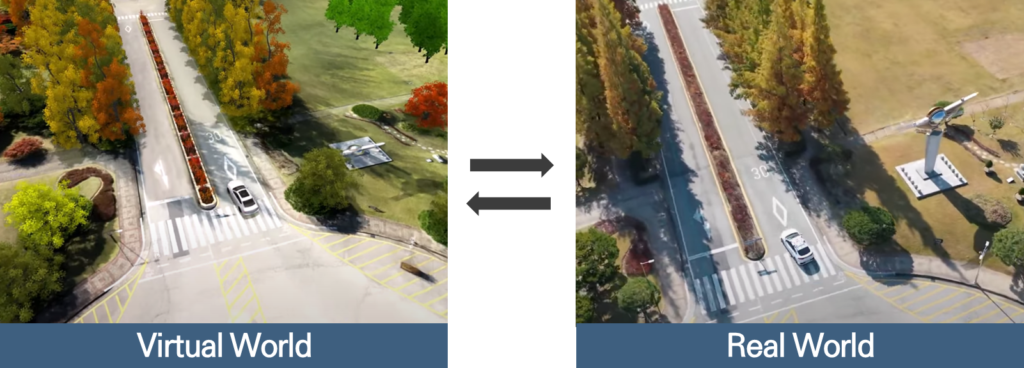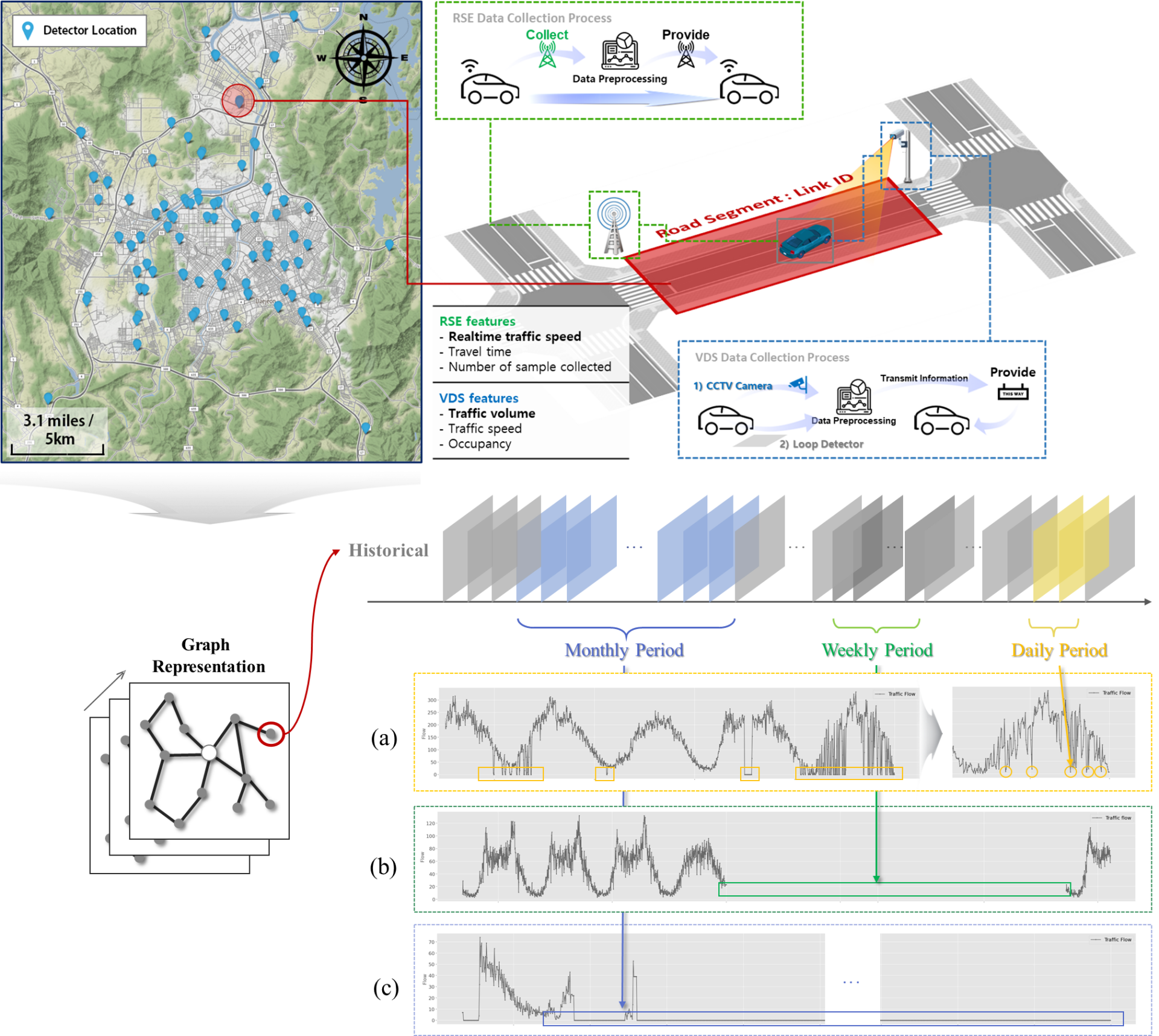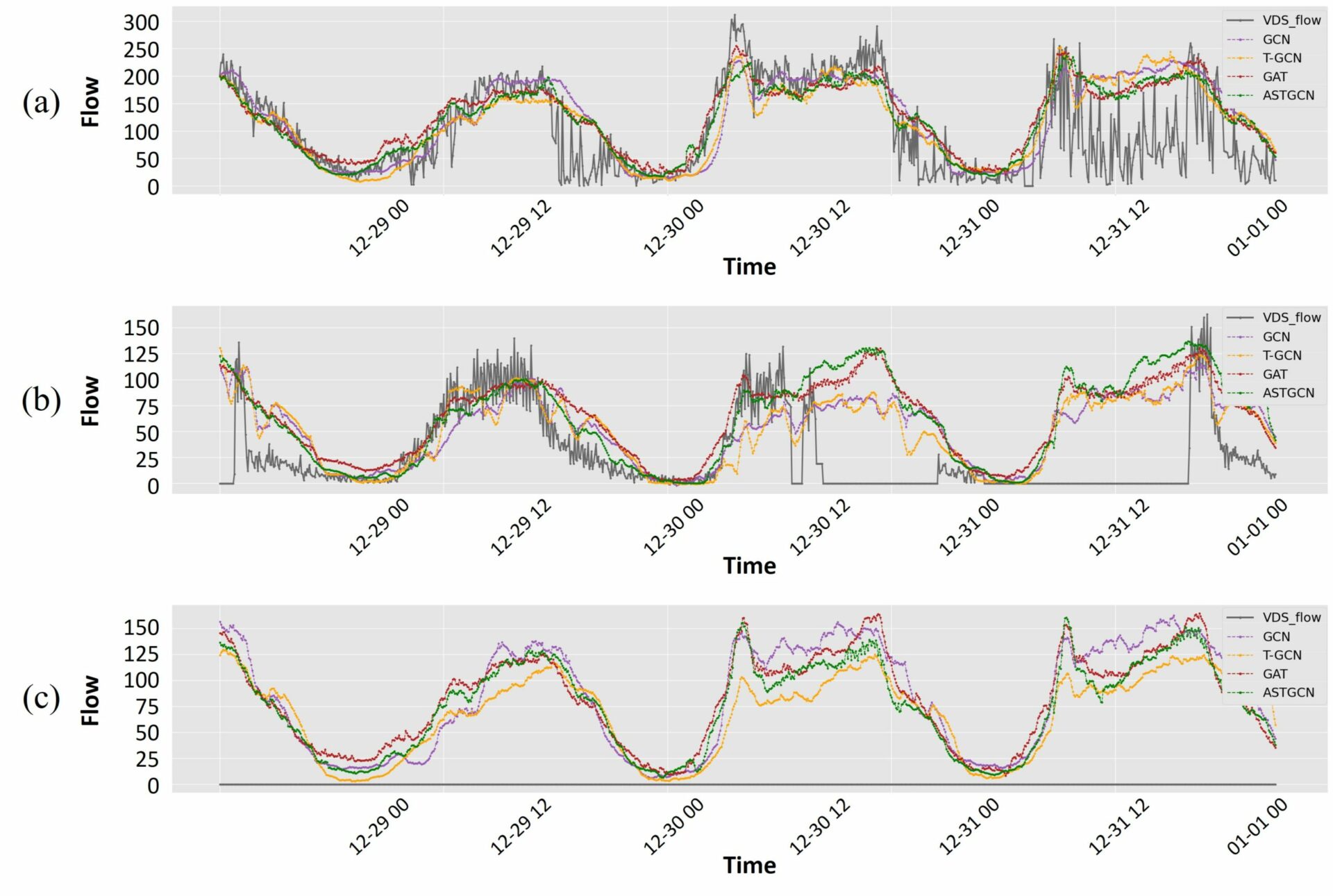Research
HOME > Research > Research Outputs
Research Outputs
Metaverse Based Emerging Technology Research
Unity-Vissim cosimulation environment development for human-in-the-loop test
- Existing human-in-the-loop (HIL) test systems have limitations in providing a realistic traffic environment.
- Microsimulation(VISSIM) is mainly used for traffic flow analysis because it embeds models that reflect general human driving behaviors(such as car-following and lane change)
- By integrating the two software, the cosimulation environment was built to analyze driving behaviors in realistically reproduced traffic flow situations.


Networking based multiagent driving simulator platform development
- Single Driving simulator has limitations in accurately reflecting human factors in collision risk situations, as vehicles in the simulation operate based on specific models.
- To overcome the limitations, a network-based multiagent driving simulator platform was developed, enabling multiple participants to engage simultaneously
- To verify the reliability of the simulator, scenarios such as car following and unsignalized intersection crossing were selected. Real-world coordinates and speed changes were collected and statistically analyzed alongside corresponding data gathered from the simulators.

KAIST Munji campus testbed transplantation to the virtual world
- To conduct a test-based study, the KAIST Munji campus was scanned using a drone.
- Point cloud data was collected and used for 3D modeling.

- Performed autonomous vehicle data replay in the metaverse environment based on the trajectory provided in Prof. Dongseok Kum's laboratory (VDC lab).

- Pedestrian model control module was embedded into the developed multiagent simulator platform to extend vehicle-human interactions case
Human-Factor Research
Interactive driving behavior in overtaking situation
- Existing studies on overtaking behavior have only examined it from the perspective of the overtaking vehicle, with limited consideration for the risk level of the vehicle approaching from the opposite side.
- The multiagent simulator helped collect a realistic overtaking driving dataset without compromising safety. The collected data was preprocessed using SMOTE_Tomek-based imbalanced data techniques to build a high-quality dataset and model human decision-making based on machine learning.

Human recognition based on the ITS technology
- Changes in drivers' cognitive responses and driving behavior were observed when warning right-turning vehicles to improve pedestrian safety at intersections.
- By considering human factors such as the driver's pupil size, viewing position, braking, and acceleration, the points where changes in driving behavior were detected and differences in behavior based on the warning method were analyzed.

Pedestrian behavior
- A pedestrian treadmill simulator is connected to the Metaverse simulator platform to calculate parameters for pedestrian height and stride length, ensuring reliable data collection for pedestrians.

Data-Driven Approach for the Practical Transportation Operation
Traffic volume imputation based on multi-source data collection system
- Traffic detectors collect traffic volume data to comprehend the flow of traffic on a city scale, enabling the establishment of an efficient traffic management system and the provision of valuable traffic information to road users for informed decision-making.
- However, various types of data gaps occur due to the data management system and unforeseen situations on the road. We have observed that these gaps occur on an hourly basis in the short term but extend to a monthly basis in the long term.
- Therefore, a deep learning model based on Graph Neural Networks has been proposed, which is capable of simultaneously imputing the missing traffic volume values in the massive dataset collected by city-wide traffic detectors.
- The proposed model, in particular, incorporates an attention mechanism in the Graph domain, taking into account spatial and temporal correlations between two distinct types of detectors, which enables the recovery of the original traffic volume data with an error margin of approximately 12 vehicles/5 minutes, regardless of the data gap rate.



The overall multi-source data aggregation process and imputation procedure
A deep spatio-temporal approach in maritime accident prediction
- Predicting the risk of maritime accidents is crucial for improving traffic surveillance and marine safety.
- This study aims at investigating the application of deep learning in both short- and long-term predictions of different types of accident risks associated with small vessels by considering multiple influencing factors.
- The results reveal that although the performance of the proposed Deep Spatio-Temporal Ocean Accident Prediction (DSTOAP) model varies according to grid sizes and time intervals, its accuracy (more than 78%) makes it reliable for predicting accidents.
- Furthermore, although all types of accidents are captured with high accuracy, more than 84% of collision accidents can be predicted accurately.

The proposed DSTOAP architecture and prediction results for each grid size
Reinforcement Learning Research
Optimized signal plan development
- Develop an optimized traffic signal plan using the Neighbor Dueling Deep Q-Network (NDDQN) algorithm, which considers neighboring intersections.
- The algorithm controls four neighboring intersections simultaneously by determining signal actions with the goal of reducing emissions as a reward.




